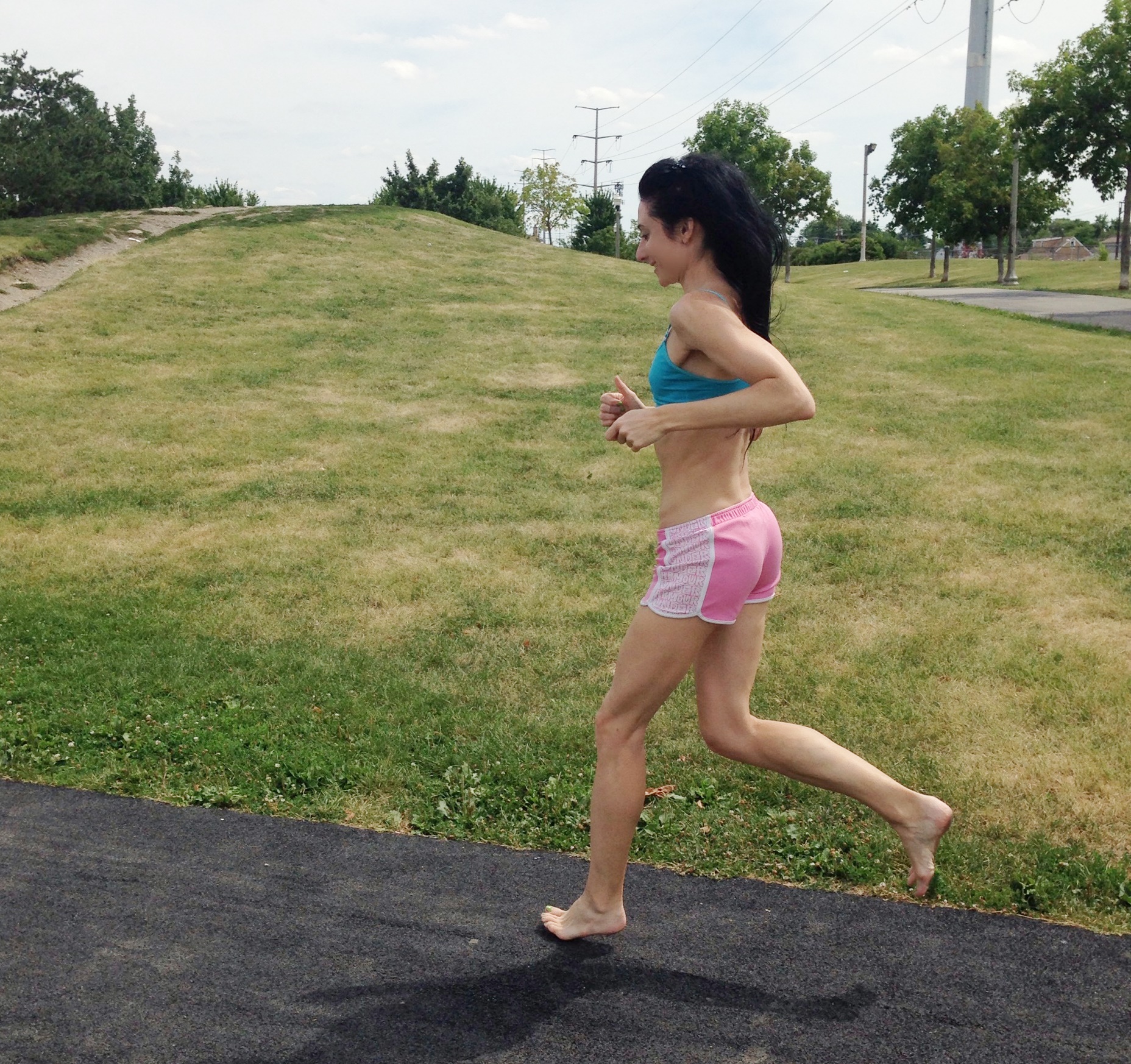There’s a reason that much of the attention so far in running has been on the foot strike pattern: heel strike vs forefoot strike. This is because how we use our foot strike when we run has a big influence on other areas of your mechanics which in turn has big implications for injury.
For instance, in heel strike running, the heel tends to move too much relative to the front of the foot during stance as compared with forefoot running. Essentially, heel strike running causes the foot to grapple too much with the ground, and a lot of injuries stem from this. How so?
In heel strike running, the reason the foot wrestles too much with the ground is because the foot makes a longer travel from heel-to-toe when interfacing with the ground. This allows more of a chance for the foot to alter from its neutral line.
Also, as the body weight travels over the foot, from heel-to-toe, the heel pushes away from its neutral line at an excessive rate. Several studies reveal that this type of movement not only causes more stress on the foot and leads to insufficient impact absorption, it’s directly related to causing ankle sprain, shin splints and knee injury. This is because when the heel and forefoot move too much relative to each other leads to misalignments of the foot and leg, resulting in conflicting internal and external rotation forces on the leg which is also overtaxing on the ankle as it works harder to try and stabilize the unsteady movements of the foot. Thats hardly the worst of it! .
there’s excessive motions of the foot during the stance phase in heel strike running
.knee pain in running can result from the transfer of foot eversion to internal rotation of the tibia, out of that comesincrease tibia-fascoa traction due to the contraction of superficial and deep ankle plantar-flexors during stance phase in order to counteract the excessive pronator motion of the foot
Another stressor equally frequent and accounts for the chronic and severe injuries in heel strike running, is the burst in collisional impact at landing. This is a classic feature of the heel strike because
The difference in foot motions in heel strike running is an important distinction from forefoot running
Yet until a study by Yingling et al. was published, pronation was thought to play a major role in impact attenuation of heel strike running because greater rearfoot movements occur in heel strike running as compared with forefoot running.
Tellingly, the researchers discovered that pronation and restricted pronation had no effect on the impulse wave generated at heel strike in heel strike runners. Because the two conditions had about the same amount of excessive force on tissues and bones, debunks the belief that pronation attenuates force during heel strike running.

Pronation, a Heel Striking Problem
Since heel strike running involves greater rearfoot movements as compared with forefoot running and since most joggers heel strike, pronation tends to get the most attention in terms of injury prevention.
Interestingly, the term ‘pronation’ was exclusively derived from heel strike running mechanics. Pronation means at heel strike, a combination of dorsiflexion, abduction and eversion of the subtalar joint occurs, allowing the foot to be more flexible. These movements differ in forefoot running and forefoot running is associated with less impact, suggesting that pronation is less troubling for forefoot runners. Moreover, research indicates that excessive pronation appears to pertain to heel strike running, not so much forefoot running.
The Take Home Message
The big answer is that yes heel strike running is the most injurious way to run because to sate, there’s just not enough evidence to support that heel strike running is safer than forefoot running. There is more than enough confirming suggests that the most change occursthere’s nothing about heel strike running that provides protection against harmful impacts, and
More From Run Forefoot:
Patellofemoral Pain Syndrome – Many runners suffer this dreaded injury, but many runners don’t know why. This article covers the main cause of knee injury in runners.
Achilles Heel – Found out why heel strike running is such a daunting task for the Achilles tendon, resulting in injury to the tendon.
Eccentric Exercises – We often hear about eccentric exercises, but you can achieve them just by running barefoot; find out how.
Forefoot Shoe Review – Read my review on the FeelMax Osma 2, an under-appreciated forefoot running shoes that is a great tool to help you mechanically run your best.
References:
Yingling VR., Yack JH and White SC. The effect of rearfoot motion on attenuation of the impulse wave at impact during running. J Appl Biomech, 1996, 12, 313-325
Bretta Riches
BSc Neurobiology; MSc Biomechanics candidate, ultra minimalist runner & founder of RunForefoot. I was a heel striker, always injured. I was inspired by the great Tirunesh Dibaba to try forefoot running. Now, I'm injury free. This is why I launched Run Forefoot, to advocate the health & performance benefits of forefoot running and to raise awareness on the dangers of heel striking, because the world needs to know.
Latest posts by Bretta Riches (see all)
- Does Foot Strike Really Matter in Running? YES! - 17/04/2024
- Heel Lifts Increase Injury in Runners - 16/04/2024
- Are Minimalist Shoes Good for Seniors? YES! - 14/04/2024

Leave a Reply